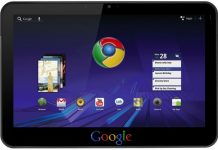 New figures from IDC and the UK’s FutureSource Consulting, shared by Education Week and elsewhere, indicate that Chromebooks are getting a lock on the U.S. K-12 market, helped by the cheapness of the devices, the Chrome Os’s suitability for cloud-based scalable deployments, and Google’s free Apps for Education suite.
New figures from IDC and the UK’s FutureSource Consulting, shared by Education Week and elsewhere, indicate that Chromebooks are getting a lock on the U.S. K-12 market, helped by the cheapness of the devices, the Chrome Os’s suitability for cloud-based scalable deployments, and Google’s free Apps for Education suite.
“Schools tell us that Chromebooks fill three big needs: they’re easy for students and teachers to use, they’re easy to share, and they’re easy to manage,” says the Google Official Blog. “That’s critical for schools that often want to give their students the best technology, but don’t have a large IT department to support it.”
Obviously, this means that many pupils are going to spend much of their classroom e-reading time reading on a Chromebook, and potentially at home as well. Would this spell a change for e-reading habits in future generations?
Just as obviously, Chromebooks have keyboards, making them a less than perfect choice for casual e-reading. But for schoolwork where those keyboards are required alongside, they should make an ideal compromise. And a slew of ereader apps are already available for Chrome, including Readium and Good e-Reader, as well as Google Play Books, Kindle Cloud Reader, and Kobo Instant Reader.
Predictions abound of Chrome OS tablets and convertibles in the offing, as well as convergence with Android, itself, which would close the gap with Kindles and other convenient ereading form factors still further. With this in mind, school textbook publishers obviously should be considering how they can best play into the platform and the available e-reading options. That might be a far more important consideration for future market share than getting things right for iPad.

































